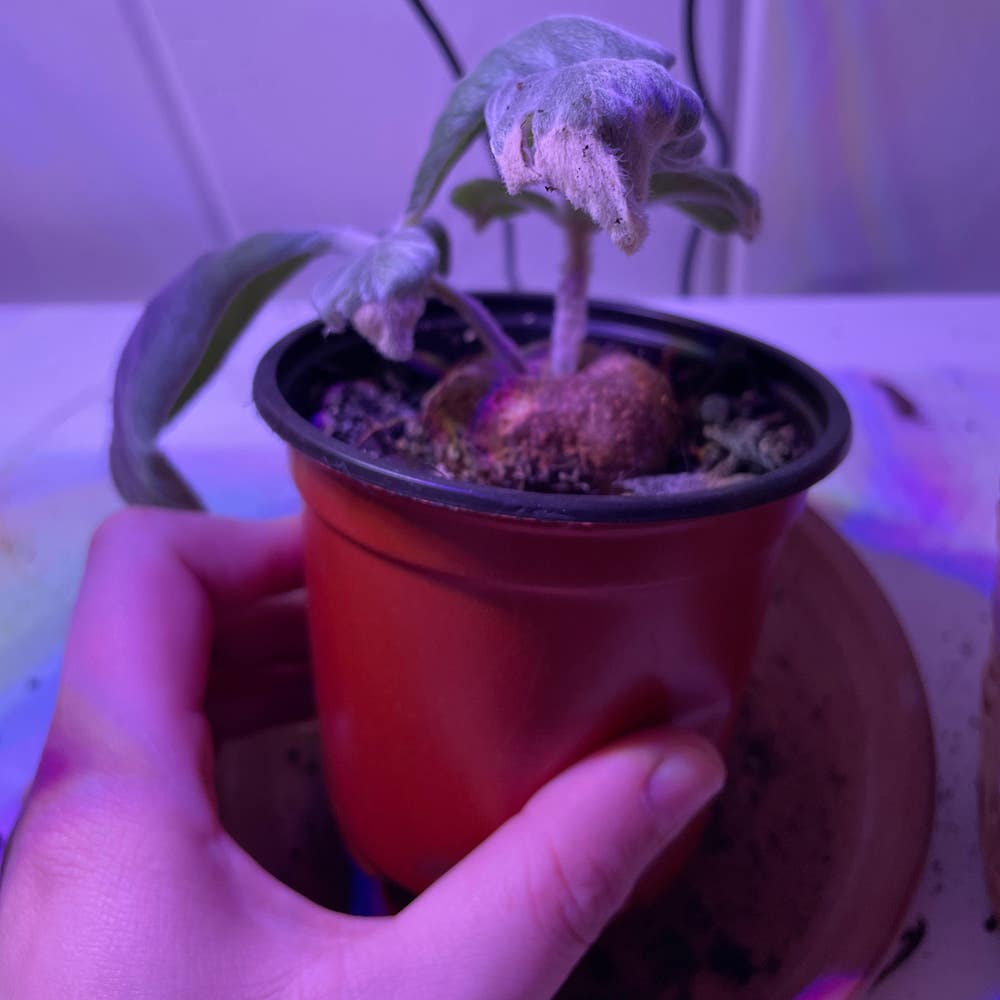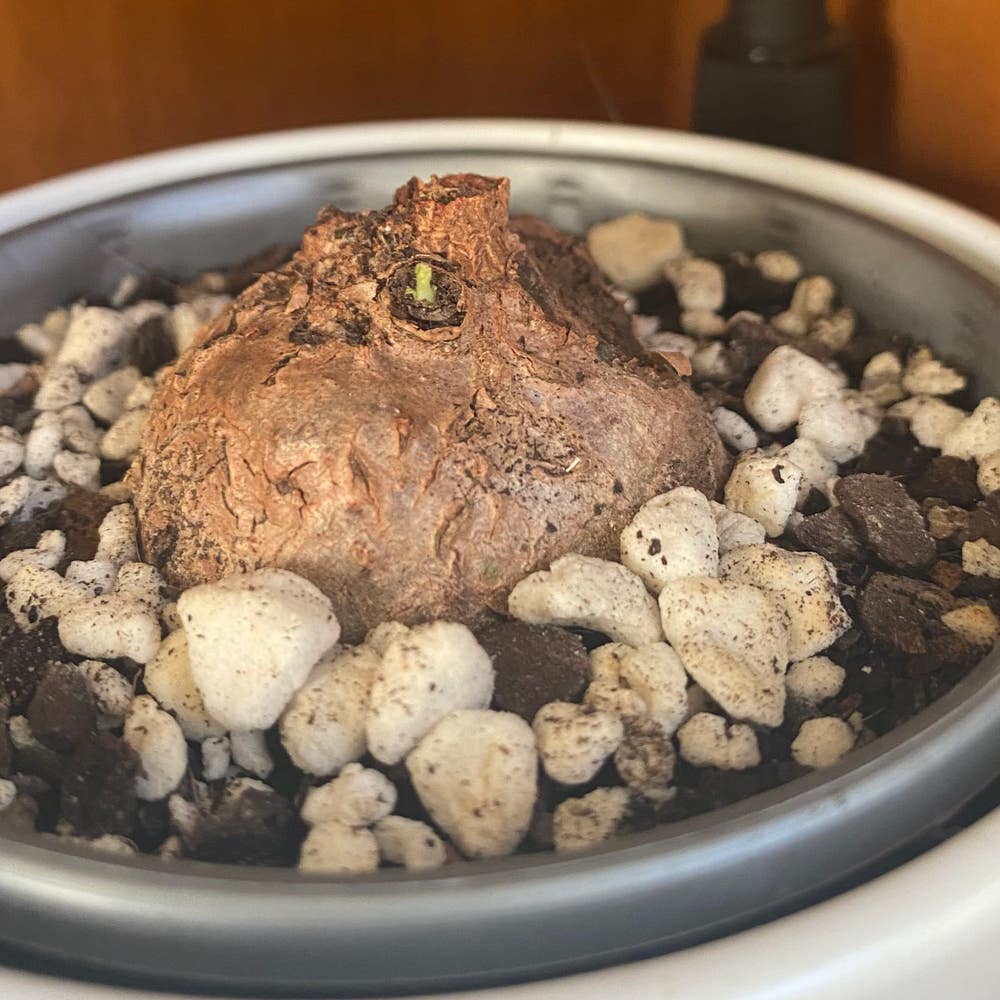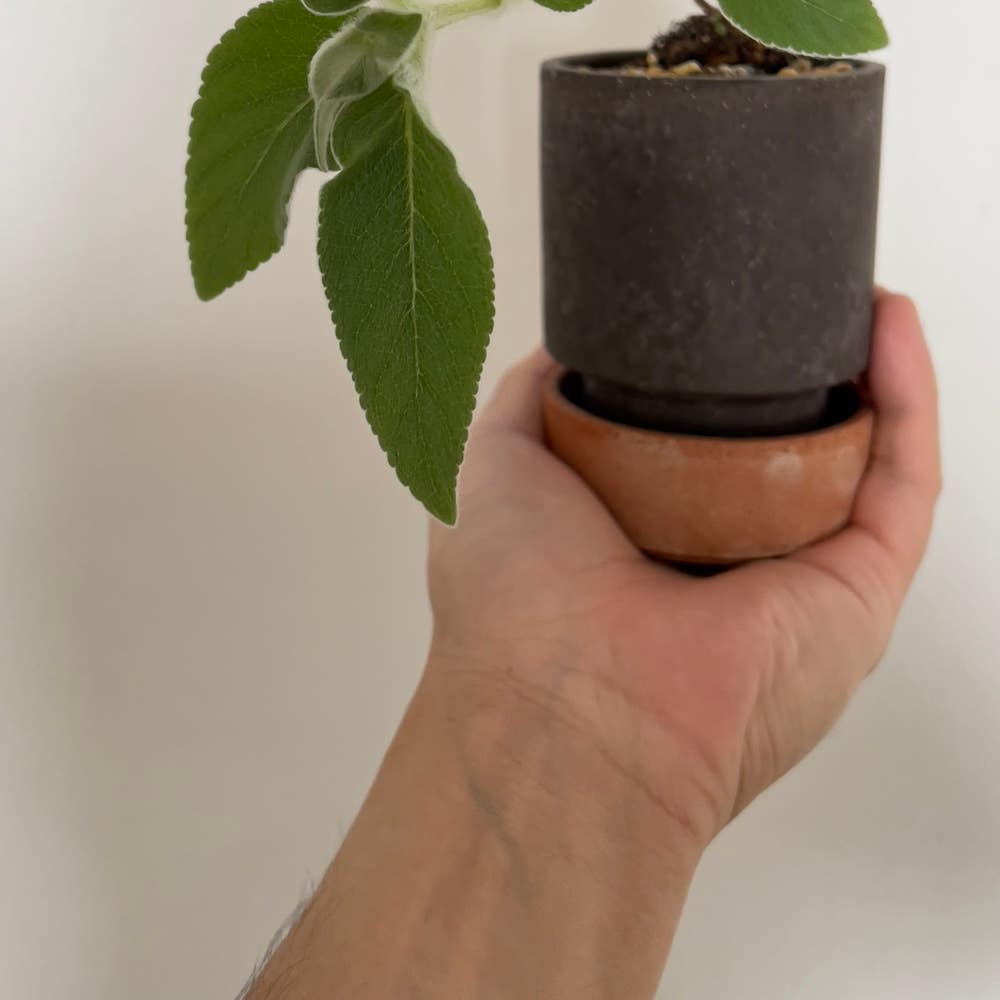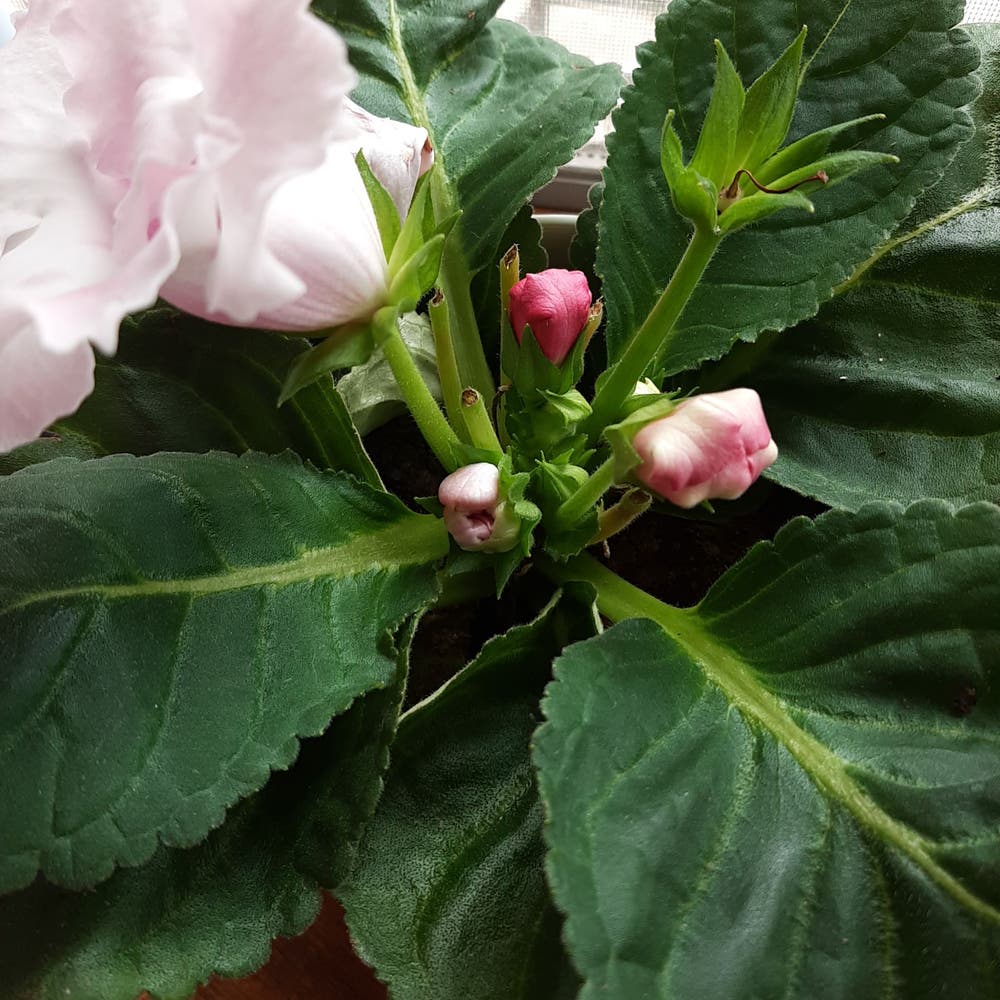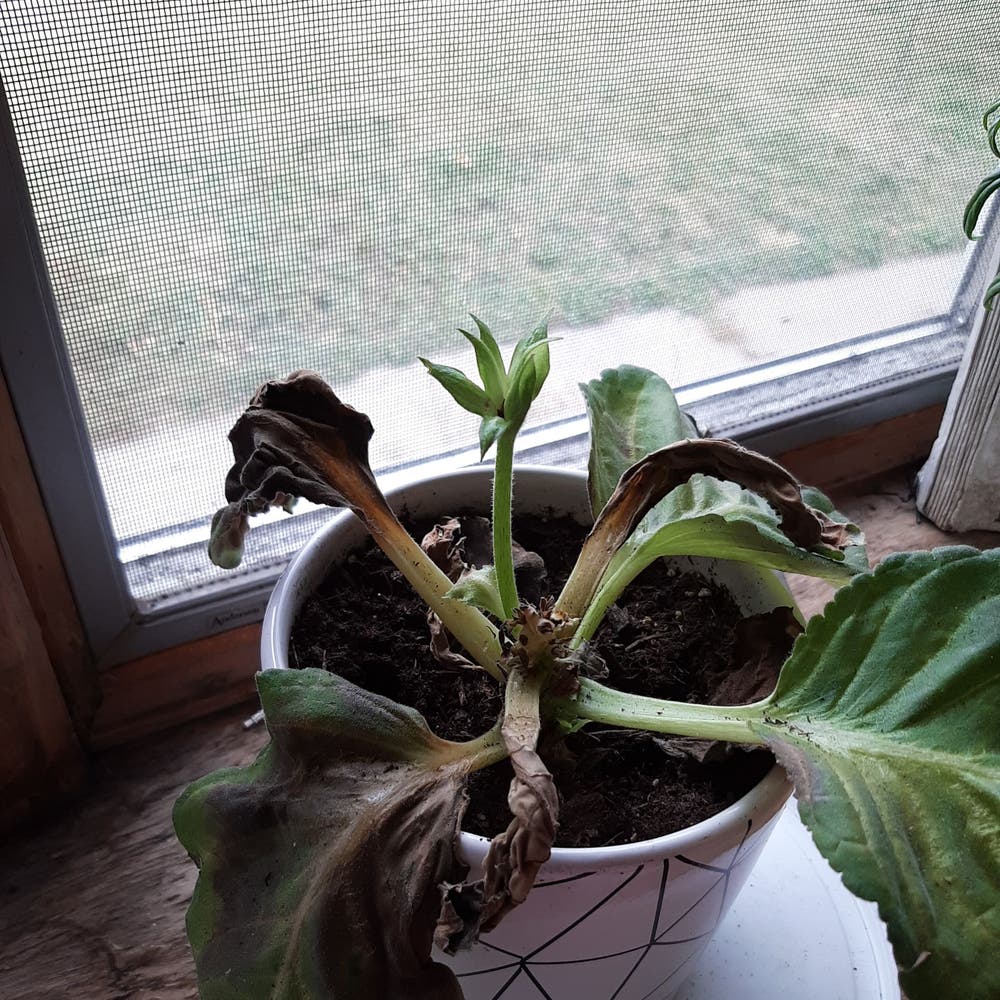

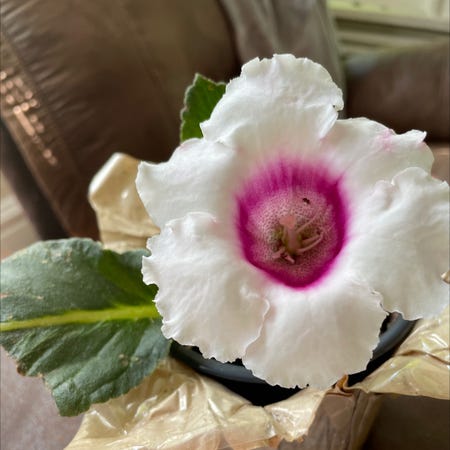



































Florist's gloxinia
About Florist's gloxinia
Gloxina is a perennial bulb and relative of African violets. It blooms in the spring and needs a constant temperature of 60-65 degrees. It can be grown as a potted houseplant and can be taken outside in the summer. It needs bright indoor light with no direct sunlight and constant moisture.
Taxonomy

Sinningia speciosa
Sinningia
Gesneriaceae
Lamiales
Also known as
Gloxinia and Brazilian gloxinia

How to care for Florist's gloxinia
How often to water your Florist's gloxinia

every 9
Florist's gloxinia needs 0.5 cups of water every 9 when it doesn’t get direct sunlight and is potted in a 5" pot.
Use our water calculator to personalize watering recommendations to your environment or download Greg for more advanced recommendations for all of your plants.

Water 0.5 cups every
9
Finding light for Florist's gloxinia in your home

a window
Florist's gloxinia can tolerate being far from a window and light source.
Place it less than 6 feet from a south-facing window to ensure it receives enough light to survive 💪.
Select your region to see how the current weather in your area affects the placement of Florist's gloxinia in your home 🏡.
How to fertilize Florist's gloxinia
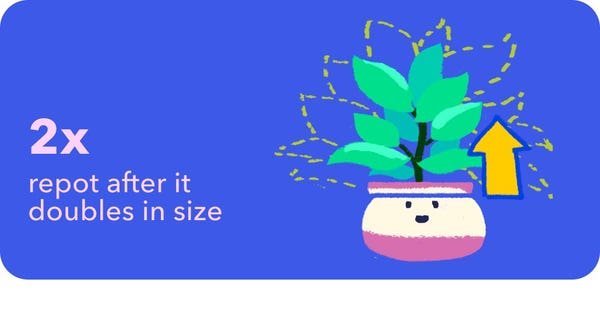
Most potting soils come with ample nutrients which plants use to produce new growth.
By the time your plant has depleted the nutrients in its soil it’s likely grown enough to need a larger pot anyway.
To replenish this plant's nutrients, repot your Florist's gloxinia after it doubles in size or once a year—whichever comes first.
-
Where are my caudex people at? I’ve had my #sinningialeucotricha for about 6-8 months now and have it situated in a 4 in plastic pot with a soil mix that is a little denser than I’d like. It gets full spectrum light under a grow light for 12 hours a day, temps stay around 70* and humidity is at least 60% but can get up to around 75% in this room. I check it for watering once every 10-14 days right now and plan to dial it way back for winter. The growth on this thing has been a little disappointing this year - misshapen leaves with crispy brown tips and no flowers. It’s going to be going dormant pretty soon. Has anyone had luck getting these to flower? When do you cut back the foliage? Should I wait to repot into a coarser mix? Give me your knowledge plzzzzzzzz
-
Look who has awoken from dormancy! I thought I accidentally killed it when one day I was putting a jumper on and flicked the entire freshly growing stem off the caudex. I have found it is super hard to buy in Australia and I just got lucky when I was trying to get a sinningia leucotricha (Brazilian Edelweiss)! So hard to find that I cannot find anywhere to get a second one, so you can imagine my fear when I thought I killed it. 😟 He had been sitting there looking like a potato for three months until this week, I saw the first sign of life again! Do you have a sinningia cardinalis?
-
It was getting so bushy so i chopped most of the fuzzy foliage #HappyPlants #PlantsMakePeopleHappy #NewGrowth #PlantAddict #Caudex #PLANTMAFIA
-
Love new blooms🥰
-
Soft brown leaves Aphrodite is slowly losing her leaves and they're brown and limp. It looks like overwatering to me but her soil is completely dry. Is it a sign she has root rot and I should repot? #plantaddict #notsohappyplants #plantsmakepeoplehappy #plantlover #plantmafia #planttherapy #greggang #plantlove
Care Summary for Florist's gloxinia

Florist's gloxinia
 Greg recommends:
Greg recommends:
 Water
Water
0.5 cups every 9 days
 Placement
Placement
< 6ft from a window
 Nutrients
Nutrients
Repot after 2x growth
Based on the 4” pot your plant is in, and that it doesn’t get direct sunlight.

 Trending in your area
Trending in your area
 Similar to Florist's gloxinia
Similar to Florist's gloxinia
✨ Discover rare plants

Begonia lubbersii

Royal Flush Split Rock

Haworthia emelyae com…

Rosularia platyphylla

Hoya 'Memoria'

Betel

Thelocactus macdowell…

Philodendron eximium

Tuber Fleeceflower

Sedeveria 'Blue Elf'

Christmas Candle

Anthurium 'Fantasy Lo…

Scotch Moss

Sedum 'White Diamond'

Treasure Flower

Peperomia 'Harmony's …

